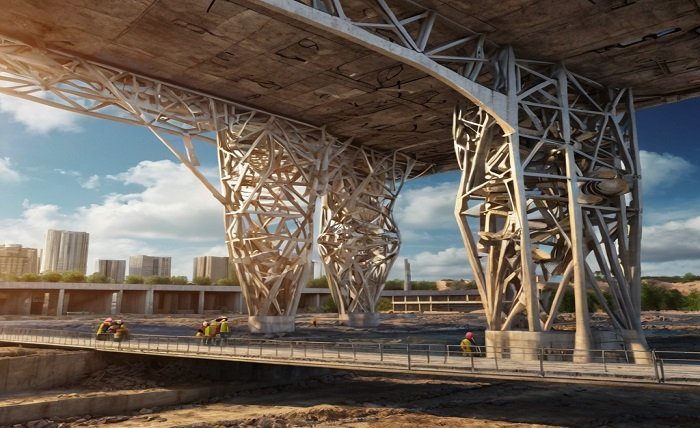Civil engineering technology is leading the way in changing our infrastructure, from complex road networks to tall buildings. This blog article explores the rapidly evolving field of civil engineering technology, emphasizing its importance, developments, and prospects.
What is civil engineering technology?

Civil engineering technology is the application of engineering principles to the design, construction, and maintenance of infrastructure. It entails utilizing cutting-edge equipment, methods, and supplies to extend the construction’s life and functionality. By bridging the gap between theoretical engineering concepts and real-world applications, this area makes sure projects are safe, effective, and sustainable.
Historical Development: From Classical Marvels to Contemporary Wonders
The history of civil engineering is extensive, tracing back to the eras of ancient Egypt and Rome. Two early examples of civil engineering achievements are the Great Pyramids and the Roman aqueducts. The field has developed throughout the decades, embracing new technologies like computer-aided design (CAD), steel, and concrete. Understanding this historical development helps one better understand contemporary civil engineering technologies’ developments and increasing complexity.
There are important elements of technology in civil engineering
Engineering Structures
The main goal of structural engineering is to make sure that a structure’s framework can support a range of loads and forces. This subdiscipline includes the design and study of buildings, bridges, and other load-bearing structures.
Engineering Geotechnical
Geotechnical engineering studies the behavior of earth materials and their interactions with structures. The stability and security of retaining walls, tunnels, and foundations depend on this field.
Engineering for Transportation
Roads, highways, trains, and airports are just a few of the transportation systems that transportation engineers design, build, and maintain. Transportation engineers ensure the safe and efficient movement of people and products.
Environmental Science and Technology
To create answers to environmental problems, environmental engineering combines concepts from soil science, biology, chemistry, and engineering. The main areas of emphasis for this subdiscipline are trash management, recycling, public health, and air and water pollution.
Cutting-Edge Technologies: Creating the Future
Building information modeling, or BIM,
BIM allows for the digital representation of a building’s functional and physical attributes. It enhances efficiency and lowers errors by enabling better project management, collaboration, and visualization.
Drones and airborne mapping
Drones are revolutionizing mapping and surveying because of their ability to provide precise and timely data. Topographic mapping, construction progress monitoring, and site inspections employ them.
The 3D printing process
In civil engineering, 3D printing makes it possible to precisely, with less material waste, create complicated structures. Researchers are investigating the use of this technology in the construction of homes, bridges, and even elaborate architectural details.
Astute Materials
Smart building materials are opening the door to more sustainable and resilient infrastructure, such as self-healing concrete and adaptable building skins. These materials adapt to changes in the environment, increasing their efficiency and longevity.
Sustainability’s Place in Civil Engineering
One of the main goals of contemporary civil engineering technology is sustainability. Engineers are utilizing renewable energy sources, creating green building designs, and putting waste reduction plans into action. Sustainable practices lower expenses, enhance the quality of life, and safeguard the environment.
Educational and Career Opportunities
Having a strong educational background is essential for pursuing a career in civil engineering technology. Essential qualifications include degrees in civil engineering, construction management, or related professions. Furthermore, gaining real-world experience through internships and specialized certifications might improve one’s chances of landing a job. There is a significant need for qualified civil engineers, and there are chances in private consultancies, government agencies, and construction companies.
Upcoming Developments and Trends
Technology for civil engineering has a bright future ahead of it thanks to developments in robots, artificial intelligence, and the Internet of Things (IoT). Several breakthroughs, including smart cities, autonomous construction machinery, and improved data analytics, will shape the growth of infrastructure.
In summary
The dynamic and rapidly evolving field of civil engineering technology greatly influences our built environment. Modern skyscrapers and ancient wonders alike are examples of how this discipline’s accomplishments continue to push the boundaries of what is possible. Anticipating the future and creating a world that is efficient and resilient will require adopting new technologies and sustainable behaviors.
FAQ
What type of technology does civil engineering employ? Using engineering concepts to design, build, and maintain infrastructure. It consists of sophisticated instruments and methods to improve structural longevity and performance.
Which essential elements make up civil engineering technology? Transportation engineering, environmental engineering, geotechnical engineering, and structural engineering are important elements.
In what ways does civil engineering incorporate sustainability? To save expenses and preserve the environment, sustainability in civil engineering entails developing green structures, utilizing renewable energy sources, and putting waste reduction plans into action.
Which cutting-edge technology will influence civil engineering in the future? Aerial surveying and drones, 3D printing, smart materials, and building information modeling (BIM) are examples of innovative technologies.
